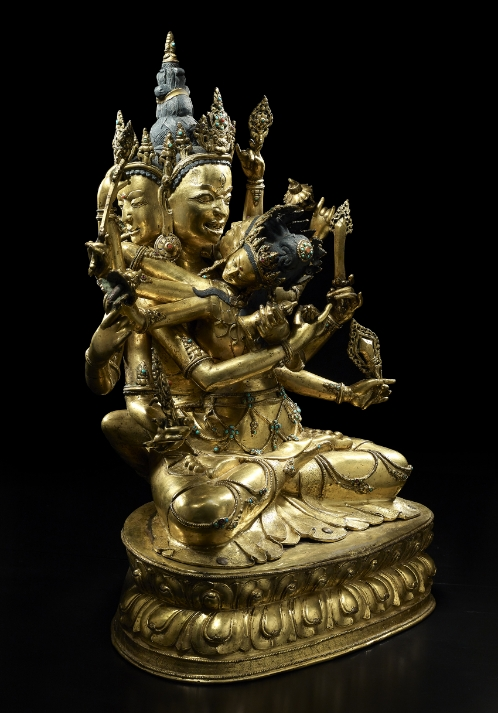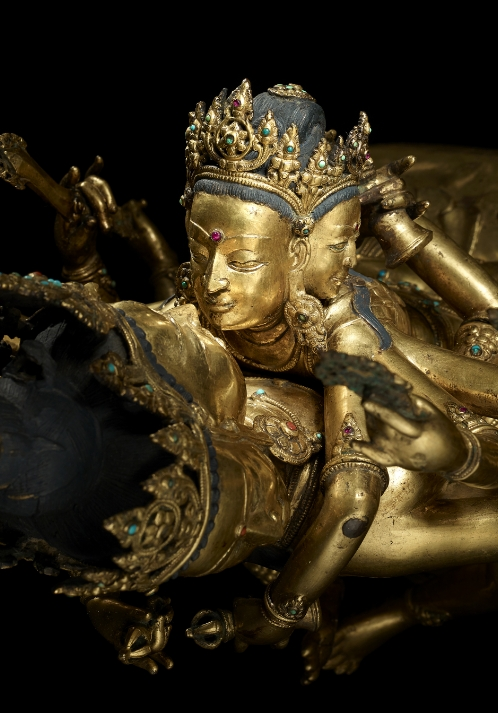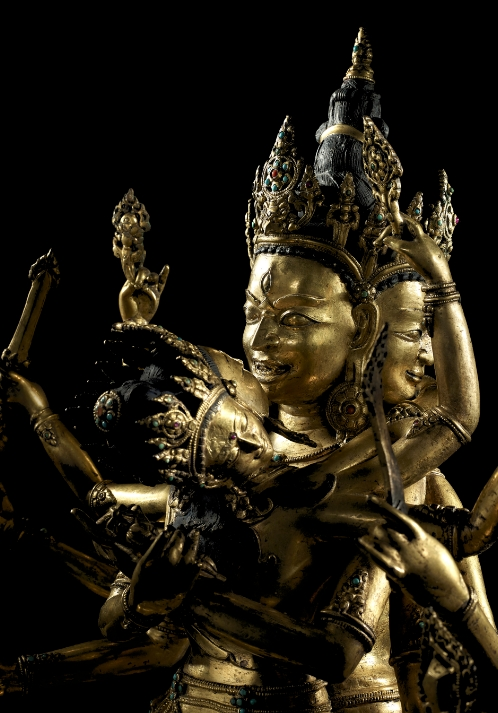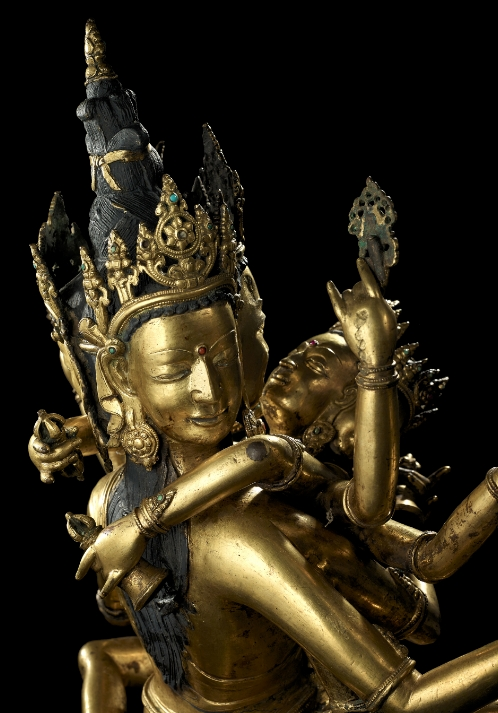An outstanding sculpture in the collection represents the entwined figures of Aksobhyavajra and his consort Adhiprajna (“Highest Wisdom” or “Highest Consort”) in an ecstatic embrace (cat. no. 19).
When the two figures are joined in this way, the iconography is known as Guhyasamaja, “The Secret Assembly.” Both figures are three-faced and six-armed, and they hold identical implements: the bell and thunderbolt scepter, wheel, lotus, gem, and sword. A larger vision of this iconography places them at the center of a thirty-two-deity mandala.
The textual basis of this visionary practice was composed in India perhaps in the last half of the eighth century. Soon after, it was translated into Tibetan and then translated again in the 11th century by Rinchen Zangpo and Sraddhakaravarman. It became highly influential in Tibet, along with other similar works including the Hevajra Tantra, the Kalachakra Tantra, and the Chakrasamvara Tantra.


This is one of the earliest tantras to use overtly sexual symbolism and to advocate unorthodox methods, including the ingestion of “impure substances” (e.g., wine, meat) as part of the Buddhist path to enlightenment. Some of the greatest Indian philosophers, including Nagarjuna, Aryadeva, and Chandrakirti, wrote enduring commentaries on the enormously challenging text. Five volumes in the collected works of Tsong Khapa (1357-1419) contain his commentaries on it. In Tibet, the Kagyu tradition inherited Guhyasamaja practice from Marpa (1012-1097), who learned it from the Indian master Naropa and others. The Sakya school also recognizes and studies this tantra.
The sculpture is a casting tour de force. Cast in several parts, it is nevertheless an extraordinary achievement to create two such complex figures with twelve arms disposed so gracefully around their torsos. It is likely to have been created in the 15th or 16th centuries, a time when Tibet was undergoing major transformation under the direction of great theologians such as Tsong Khapa. Founder of the Gelukpa (adherents of the virtuous tradition) order, Tsong Khapa drew from the achievements of all four orders of his time: Sakya, Nyingma, Kadam, and Kagyu. He insisted on strict observance of vinaya (ancient Indian rules of monastic conduct). He reinvigorated the study and practice of Buddhism and founded large monasteries such as Ganden (1410), Drepung (1416), and Sera (1419), the latter eventually housing as many as 10,000 monks. The religious sanctuary at Gyantse may also be relevant to this work.


At the Tsuglagkhang (completed 1425) and the Kumbum stupa (completed 1474), one finds long-limbed figures rendered with similar confidence, and with comparable garment, jewelry, and lotus petal designs.
A smaller image of about the same period can be found in The Bertie Ashmann Foundation of Tibetan Art at the Rietberg Museum. In the same collection is another related work, with similar delicately wrought jewelry design, primarily inset with turquoise.55 A Vajrabhairava in the Rietberg Museum provides yet another comparable example of c. 15th-16th-century jewelry design and lotus petals comparable to those in this work.



